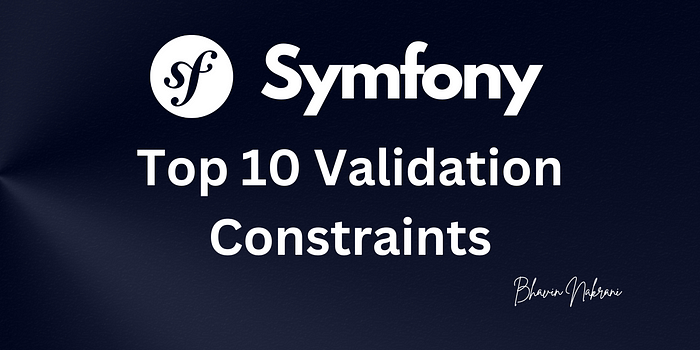Member-only story
Top 10 Validation Constraints in Symfony
These validation constraints are used in daily development and are common for most features. You should be aware of them.

Symfony is a powerful PHP framework that makes web development easier and more efficient. One of its key features is the robust validation system, which ensures that the data your application handles is correct and secure.
In this blog post, we’ll explore the top 10 validation constraints in Symfony
- NotBlank
The NotBlank constraint ensures that a value is not empty, It means not equal to a blank string, a blank array, false or null . It’s commonly used for required form fields where users must provide input.
use Symfony\Component\Validator\Constraints as Assert;
class User
{
/**
* @Assert\NotBlank(message="Username should not be blank.")
*/
private $username;
}In this example, the username field must not be empty. If it is, the custom message will be displayed.
2. NotNull
The NotNull constraint ensures that a value is not null. Unlike NotBlank, it allows empty strings or other "blank" values but disallows null.
use Symfony\Component\Validator\Constraints as Assert;
class Product
{
/**
* @Assert\NotNull(message="Price must…
